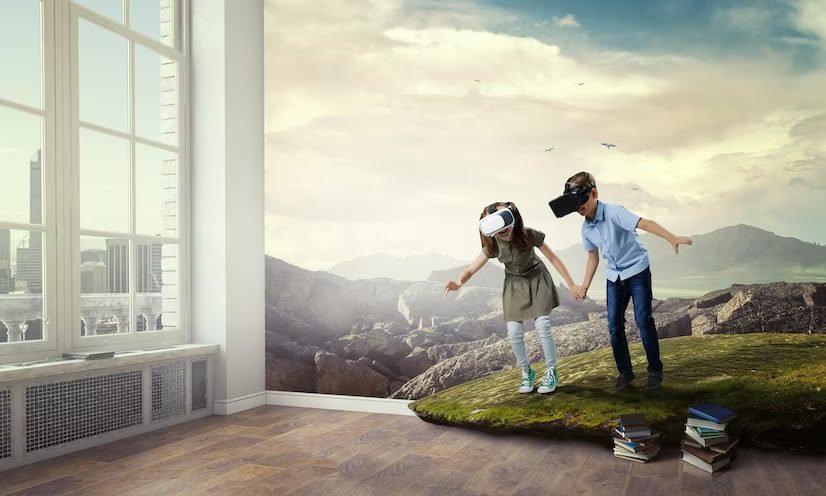Remember the days of bulky VR headsets and smartphone AR apps that felt like a gimmick? Get ready to ditch those memories, because the future of immersive technology is here, and it’s all about VR and AR merging into a mind-bending experience called Mixed Reality (MR). Buckle up, tech enthusiasts, because we’re about to dive into the world of MR and explore its potential to revolutionize the way we interact with the world around us.
VR vs. AR: A Tale of Two Realities
Before we delve into the exciting world of MR, let’s revisit the OG immersive technologies: Virtual Reality (VR) and Augmented Reality (AR). Here’s a quick refresher:
VR: This is the “full immersion” experience. Think strapping on a headset that transports you to entirely new digital worlds – think battling aliens on Mars or exploring the depths of the ocean.
AR: This technology overlays digital elements onto the real world. Imagine holding your phone up and seeing 3D dinosaurs roaming your living room or getting directions projected onto your windshield as you drive.
The Rise of Mixed Reality: Where VR and AR Collide
VR and AR merging isn’t just about combining two technologies – it’s about creating an entirely new way to experience the world. MR blends the best of both worlds:
Digital Objects in the Physical World: Imagine placing virtual furniture in your living room to see how it looks before you buy it, or practicing surgery on a holographic patient.
Interactive Real-World Environments: Think museums where historical figures come alive before your eyes or classrooms where students can explore virtual ecosystems within their physical space.
Seamless Integration: MR seamlessly blends digital elements with the real world, creating a truly immersive and interactive experience that blurs the lines between reality and the virtual.
MR: A Game Changer Across Industries
The VR and AR merging into MR has the potential to revolutionize various industries:
Education: Imagine interactive history lessons with 3D recreations of historical events or virtual labs where students can conduct experiments without leaving the classroom.
Healthcare: MR can be used for remote surgery consultations, allowing doctors to interact with patients and holographic medical models in real time.
Retail: Customers can try on clothes virtually before buying them or use AR apps to visualize furniture placement in their homes.
Entertainment: Mixed Reality games can create immersive experiences that transcend the limitations of screens, blurring the lines between reality and the virtual world.
Challenges on the Road to MR Domination
While the possibilities with MR are mind-blowing, there are still some kinks to iron out:
Technological Hurdles: Developing user-friendly and affordable MR hardware and software is still a work in progress.
Privacy Concerns: The integration of the digital and physical world raises questions about user privacy and data security.
Content Creation: Developing high-quality, interactive content for MR experiences requires significant investment and innovation.
The Future of Mixed Reality: A World of Possibilities
The VR and AR merging into MR is still in its early stages, but the potential is undeniable. As technology advances and these challenges are addressed, MR has the potential to transform the way we learn, work, play, and interact with the world around us.
Conclusion
The future of immersive technology is here, and it’s mixed. VR and AR merging into MR offers a glimpse into a future where the digital and physical worlds seamlessly blend. So, keep your eyes peeled (and maybe invest in a good MR headset) because the future of reality is about to get a whole lot more exciting (and maybe a little bit mind-bending).







